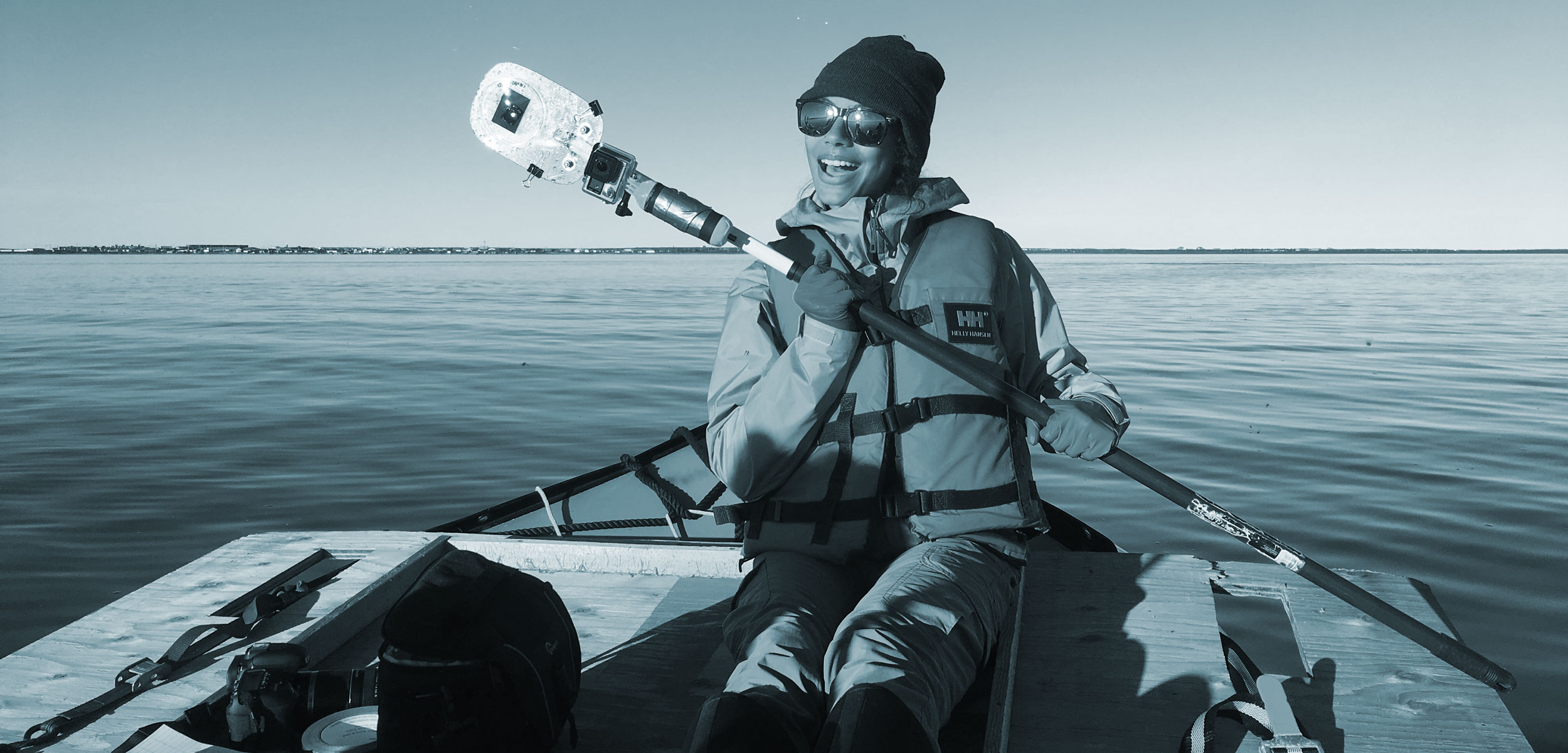Coastal Job: Whale Snot Collector
For this marine mammal biologist, whale snot says a lot.
Article body copy
Some people work in cubicles, others work in kitchens, but the most intriguing workplace of all may be the coast. Meet the people who head to the ocean instead of the office in our Coastal Jobs series.
Justine Hudson is an Arctic marine mammal biologist who studies beluga whales, bowhead whales, narwhals, and walruses with Fisheries and Oceans Canada. In a recent project, she used a noninvasive technique—collecting mucus from whale “blow” as the animals exhale—to measure stress in a population of belugas near Churchill, Manitoba.
I’ve been a snot collector for almost three years. As soon as I say, “snot,” people perk up. I get asked a bunch of questions: where’s the whale’s nose? Do you pick it?
I made this collection device, a little petri dish attached to a long painter’s pole, and I basically go fishing for snot. A local guide takes my field assistant and me out in a five-meter Zodiac, and once we find a group of whales, we turn off our engine and let the whales come to us. The belugas near Churchill are curious, so they come to the back of the boat and play in the wash. As they come up for air, they exhale, and I collect the sample. Then I put the lid on the petri dish, seal it, and keep it in the freezer until we fly back home to Winnipeg. In the lab, I extract hormones, like cortisol, from the sample, measure them, and do all of the data analysis.
Working in Churchill is like being in a nature documentary. You see caribou, belugas, polar bears, Arctic foxes, lots of birds! We go out every day for four hours at a time during high tide when the belugas come into the Churchill River estuary. Some days we’re working until 10 at night, and then we’re up at six for the next high tide.
When we went out for the first season, no one had collected blow from belugas in the wild, so we had no idea if it was going to work. The first day we got a blow sample, we were screaming, “Yeah we did it!” I have a photo of me holding my first sample, like it was my child. Even if nothing else worked, the fact that we collected that sample was a win.
I got into snot sampling to look at the impacts of shipping on the beluga population in western Hudson Bay. We’re expecting that the Arctic will become more of a corridor for shipping now that the ice-free season is longer because of climate change. Belugas are very vocal, so increased noise from ships could make it harder for them to communicate or could be frightening for them. Then you have pollution and ship strikes. Collecting blow is less stressful for the whales than a biopsy or a blood sample—this was the least stressful method I could use.
On the last day in the field, we got up really early, and there was no one else on the water. We had maybe 20 to 25 whales behind the boat, more than ever before. It was so quiet and magical—like the belugas were saying goodbye.
Doing research on stress, you learn about the impacts: on your heart, immune function, ability to reproduce. Every time I’m really stressed, I think, Calm down. Your heart rate is too high. My running joke, whenever one of my colleagues is experiencing something stressful—like presenting at a conference—is to ask, “Would you mind blowing into this tissue, and I’ll take a cortisol measurement for you?”
When I’m not collecting snot, I do a lot of science communication. I loved science growing up, but I wasn’t exposed to scientists, which is why I do so many talks for schoolkids. I think it’s important to see people who look like you, to know that these jobs exist. It doesn’t matter what gender you are, what color your skin is, science is for everyone.

